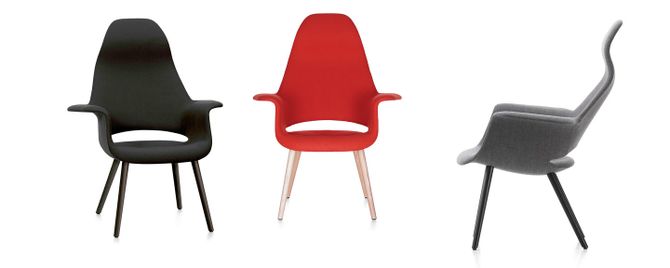
Organic Highback
Charles Eames & Eero Saarinen, 1940
Information
- Seat shell: laminated.
- Upholstery: polyurethane foam with fabric cover.
- Legs: black ash or natural oak.
- Glides: fitted with plastic glides for carpet, felt glides for hard floors additionally included.
- Origin of wood: oak (Quercus robur) and ash (Fraxinus excelsior) from Western Europe and/or Poland.
Organic Chair
The Organic Chair – a small and comfortable reading chair – was developed in several versions for the 1940 'Organic Design in Home Furnishings' competition organised by the Museum of Modern Art in New York. With its sculptural shapes, the design was ahead of the times. But due to the absence of suitable manufacturing techniques, the armchair never went into production. Not until 1950 did it become possible to manufacture and market organically shaped seat shells in large quantities, as exemplified by Charles and Ray Eames's famous Plastic Armchair or Saarinen's Tulip Chair. The Organic Chair is also available in a version with an extended backrest and longer, wider armrests – the Organic Highback armchair. The Organic Conference version can be used as table seating.
Charles Eames & Eero Saarinen
Eero Saarinen together with Charles Eames developed the first designs for furniture made from moulded plywood. In 1940, they submitted the Organic Chair as a joint entry to the “Organic Design in Home Furnishings” competition held by the Museum of Modern Art in New York.